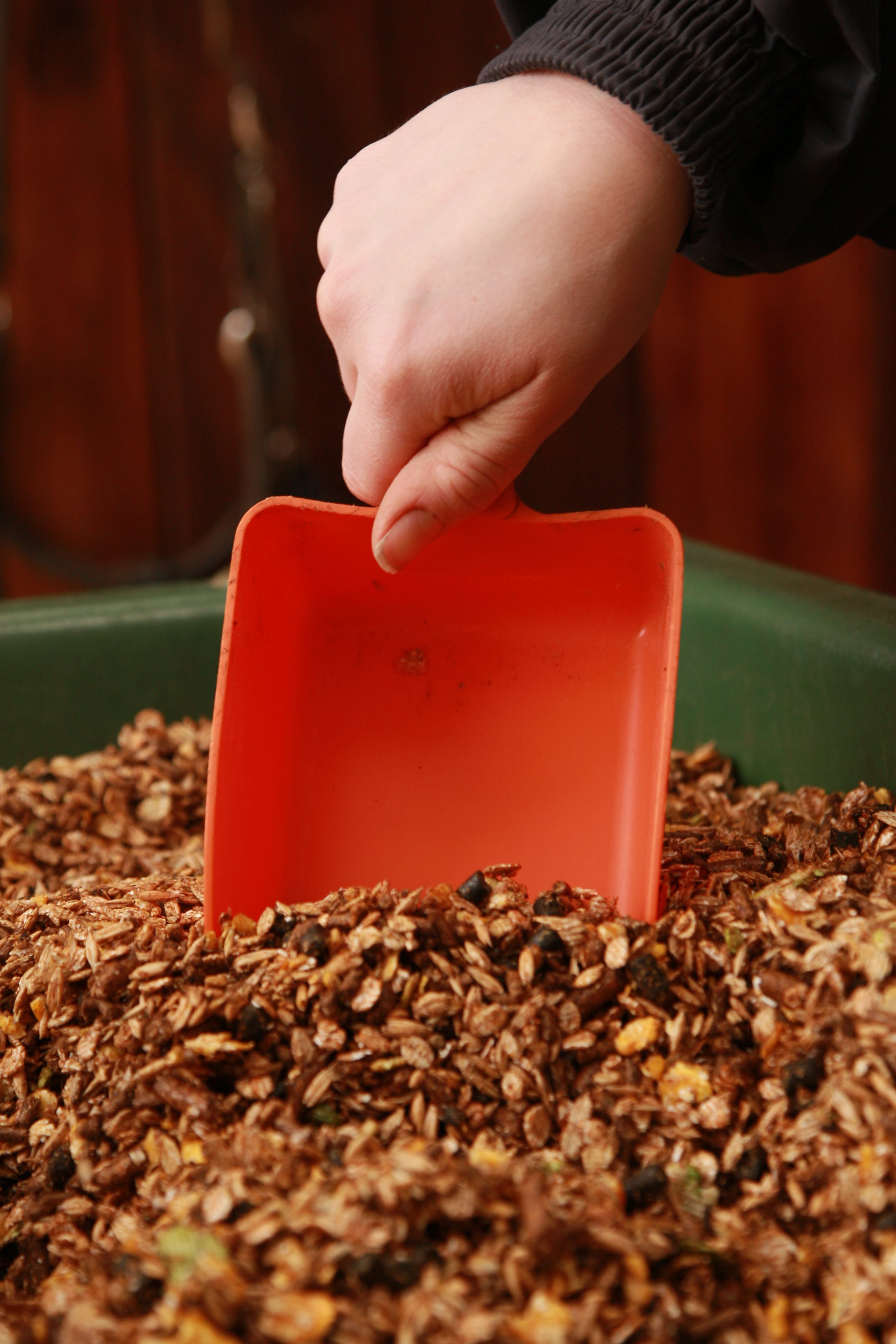As horse owners, we are bombarded with conflicting advice and opinions on starch. What level of starch should you be feeding your horse? Do you need a ‘low-starch’ feed and what does this mean? Do horses need starch at all, or are they best on a low starch horse feed? The first thing to understand is what starch actually is.
Starch is a form of carbohydrate used by plants to store energy and is made of up a large number of glucose (sugar) molecules joined together. When a horse eats starch, it is broken down into these glucose molecules in the small intestine, which are then absorbed into the bloodstream and provide fuel for exercise and normal body processes.
How does starch get into your horse’s feed?
Starch is present in almost all plant matter, including grass, chaffs and cereal grains. Your horse will be eating hundreds of grams each day just by grazing or eating hay or haylage. Hard feed contains additional starch, which helps provide the horse with extra energy for work or weight gain, among other things. The more cereals a feed contains, the higher the starch level. Starch can be replaced by other fuel sources, such as oil, but only up to a point. All horses need some starch to live and it is almost impossible for a horse to perform athletically with too little starch.
How does starch affect my horse’s performance and behaviour?
Ultimately, it depends on your horse. No feed can ever change your horse’s underlying nature. So if you have a hot headed thoroughbred for example, there is no way nutrition can turn him into a laid back plod. However, we can use nutrition to either avoid making unwanted behaviour worse, or to help the horse show the behaviour we want, both of which will improve your horse’s performance. As we said, starch is broken down into glucose molecules and absorbed into the bloodstream. This sugar provides instant energy and if we have fed a lot of it this can create a bit of a ‘sugar-rush’. Going back to that ‘fizzy’ horse, we probably want to avoid that effect so we tend to avoid feeding lots of starch in one meal, using oil and fibre as energy sources instead. On the other hand, if you have a lazy horse who could do with a bit more instant energy, feeding a small meal of highly digestible cereals, such as Pasture Mix, 2 hours before exercise can help boost energy levels and get him thinking forwards.
So what is a high starch or low starch diet?
When talking about starch intakes, you need to know two things. First, how many grams of starch is your horse getting a day? This will be important if your horse has a medical condition such as exertional rhabdomyolysis (tying-up) or laminitis. Secondly, how many grams of starch is your horse getting per meal? It’s the grams of starch per meal that count when managing a horse with gastric ulcers for example. Remember starch will also be present in your horse’s grass and hay / haylage.
In terms of the horse’s total diet for each day (fed, hay / haylage and grazing), a high starch diet, such as those used in some studies that have shown problems with feeding too much starch, contains around 30-40% starch. That’s around 4000 grams of starch per horse per day. Most horses will be fed a diet that contains somewhere between 10 and 25% starch, anywhere from 1000 to 2500 grams of starch per horse per day. This level is where you want to be feeding in most cases. Low starch diets typically contain less than 10-12% starch, so less than 1200 grams of starch per day.
Does my horse need a low starch diet?
Chances are, your horse is happy and healthy and you don’t need to worry too much about how much starch he is eating. If he is on plenty of forage and fibre and a feed from a high quality manufacturer he is very unlikely to be eating excessive amount of starch.
However, if your horse is prone to laminitis, suffers from ‘tying-up’ or gastric ulcers or is extremely hot-tempered, you will need to ensure that his diet contains 10% starch or less overall. Also, each meal should not contain more than 1 gram of starch for each kg of your horse’s bodyweight. Remember it’s not the percentage starch of the feed that is important, but the grams of starch fed. For example, feeding 2kg a day of a feed that is 10% starch provides twice as many grams of starch than feeding 500 grams of a balancer that is 20% starch.
Still confused about whether or not to give your horse a low starch horse feed or a low sugar horse feed? Each horse is different so talk to our Nutritional Advisors who will work out exactly how much starch is in your current diet and if you need to make any changes. Our helpline is open from 8.30am – 5pm Monday to Friday on 01270 782 223


